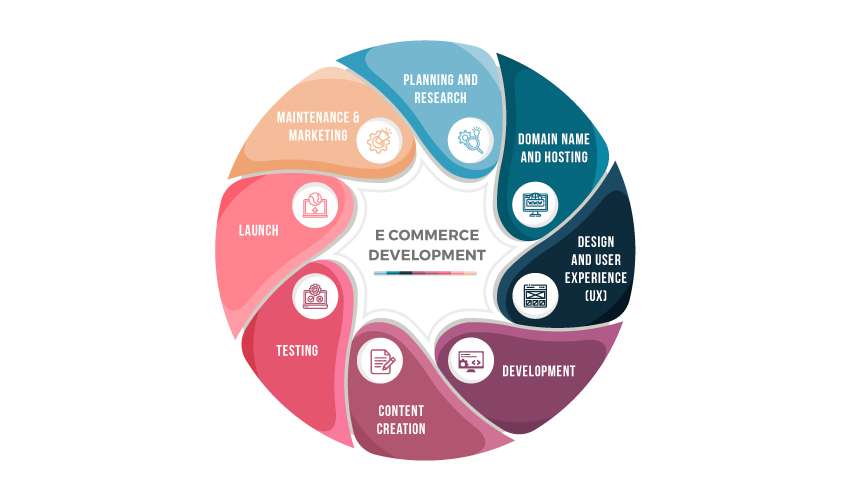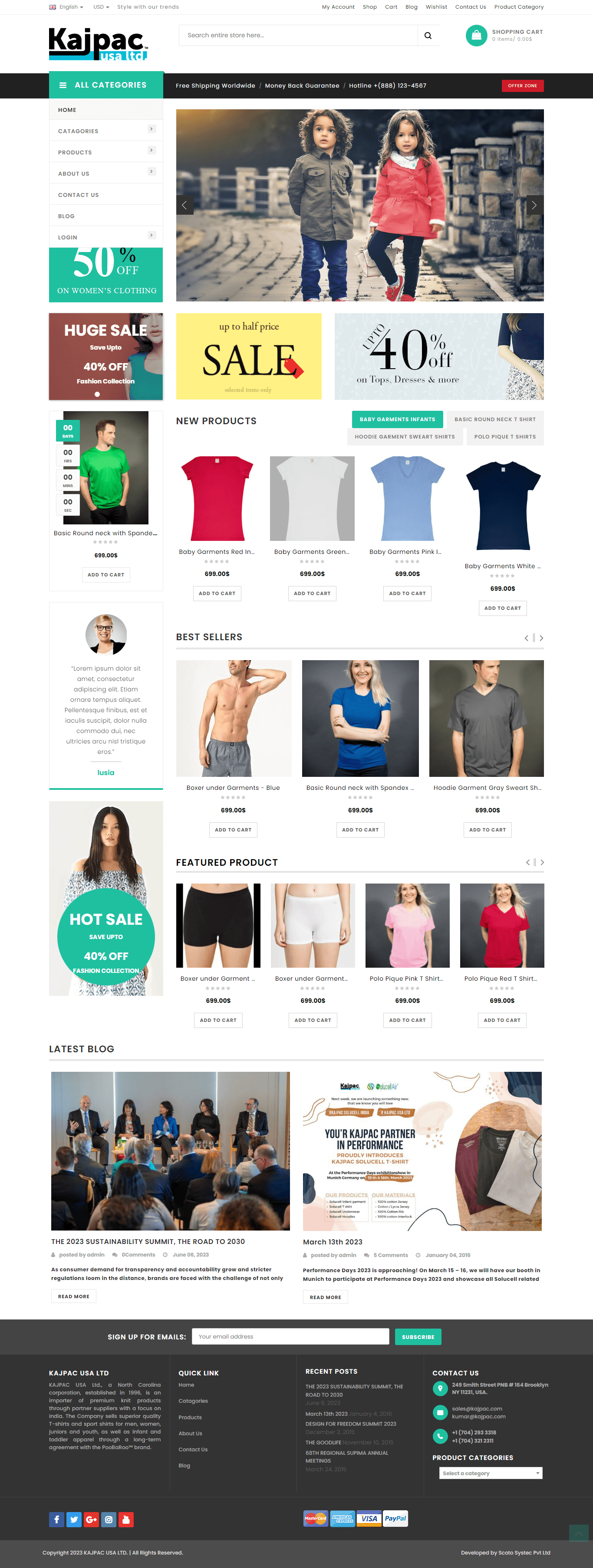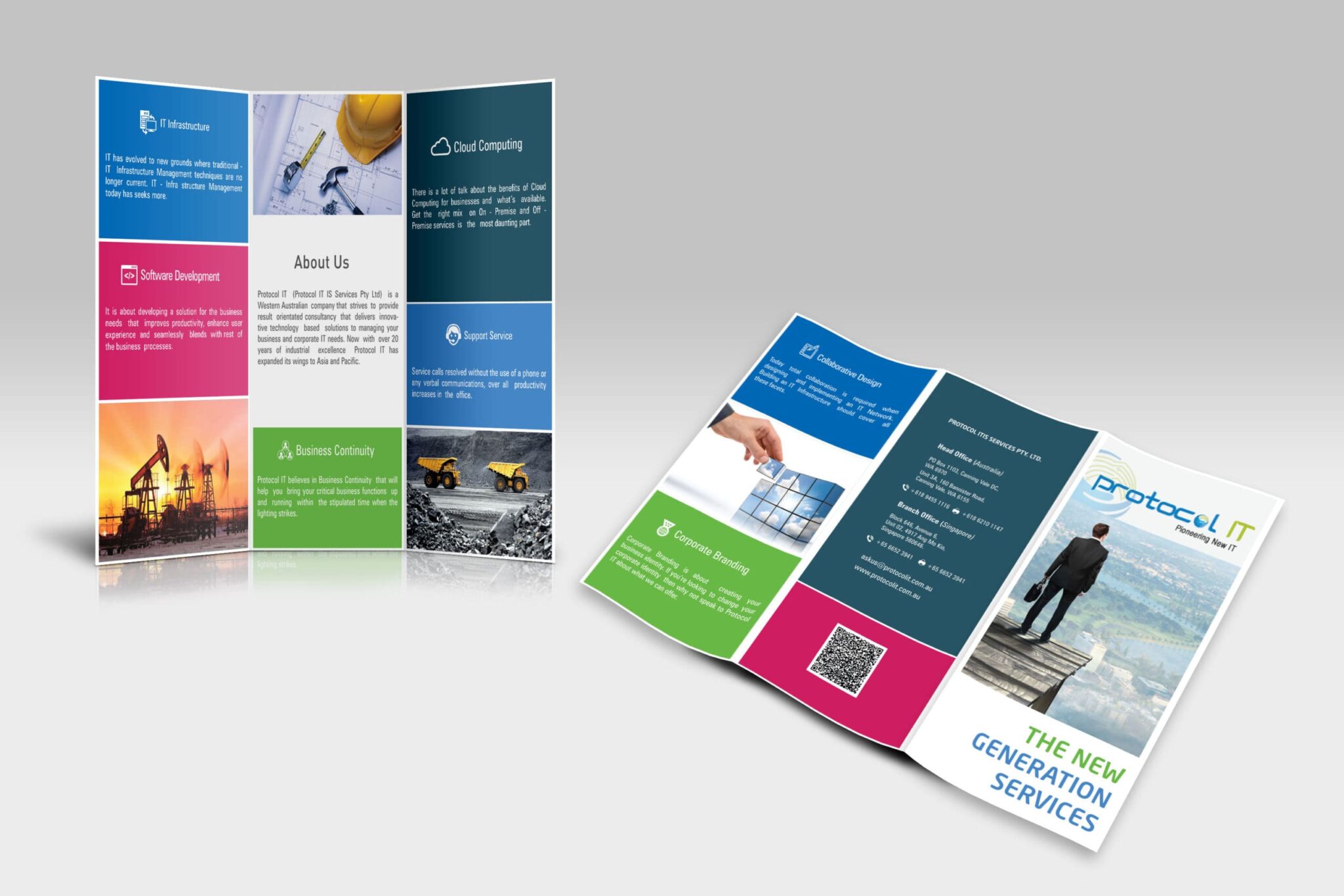E-COMMERCE DEVELOPMENT
E-commerce development is the intricate process of crafting, designing, and overseeing websites or platforms tailored to facilitate online transactions for goods and services. This expansive domain encompasses a myriad of tasks, including meticulous website design, adept database management, seamless shopping cart integration, and robust payment processing mechanisms. Moreover, ensuring stringent security measures and compliance with legal and regulatory standards are integral aspects of e-commerce development. Developers and designers collaborate closely to create user-friendly interfaces and enhance the overall shopping experience. Advanced technologies and innovative solutions are employed to streamline operations and maximize efficiency. From building responsive layouts to implementing secure payment gateways, every aspect is meticulously planned and executed.

E - Commerce DEVELOPMENT


- Define what you want to achieve with your e-commerce site, including target markets, sales goals, and customer experience.
- Analyze your competitors, target audience preferences, and market trends to inform your website design and features.
- Decide whether to use a hosted platform or a self-hosted platform based on your technical ability, budget, and customization needs.
- Gather detailed requirements for products, categories, and user accounts.
- Identify essential features such as product search, filtering, and payment methods.
- Consider shipping, inventory management, and order processing requirements.
- Plan for scalability as the business grows.
- Create wireframes to outline the structure of your website, including the layout of key pages like the home page, product pages, and checkout process.
- Develop design mockups that reflect your brand identity, including color schemes, typography, and user interface elements.
- Ensure your website is mobile-friendly, as a significant portion of online shopping is done on mobile devices.
- Convert design mockups into code using HTML, CSS, and JavaScript, focusing on creating a seamless and engaging user experience.
- Implement server-side logic, including database management, product inventory, user accounts, and payment processing. This may involve custom development or configuring your e-commerce platform.
- Connect third-party services through APIs for payment gateways, shipping, and other functionalities.
- Create compelling product descriptions and high-quality images to showcase your products.
- Implement SEO best practices to improve your website's visibility in search engine results, including keyword-rich content, meta tags, and alt tags for images.
- Design a database schema to store product information, user data, and order details.
- Implement efficient data retrieval for product listings and searches.
- Ensure data security and integrity, especially for user and payment information.
- Set up caching mechanisms for improved performance.
- Develop a user-friendly shopping cart with features like add, update, and remove items.
- Implement a secure and streamlined checkout process.
- Provide multiple payment options, including credit cards, digital wallets, and other payment gateways.
- Integrate with a reliable shipping and tax calculation system.
- Choose a secure and reputable payment gateway (e.g., Stripe, PayPal,Razorpay).
- Implement secure payment processing for user transactions.
- Ensure PCI compliance for handling sensitive payment information.
- Implement an order management system to track and process orders.
- Provide order confirmation emails and shipment notifications.
- Allow users to view their order history and track deliveries.
- Integrate with inventory management to update stock levels.
- Enable user account creation and profile management.
- Implement features like wish lists, product reviews, and ratings.
- Offer personalized recommendations based on user behavior.
- Allow users to manage their addresses and payment methods.
- Check all features, including product search, filters, shopping cart, and checkout process, to ensure they work as intended.
- Test your website's load times and responsiveness under different conditions.
- Ensure your website is secure against common vulnerabilities, such as SQL injection and cross-site scripting (XSS).
- Gather feedback from potential users to identify any usability issues.
- After thorough testing, launch your website to the public
- Use analytics tools to monitor website traffic, user behavior, and sales performance.
- Keep your website up to date with the latest security patches, platform updates, and product offerings.
- Promote your e-commerce site through SEO, content marketing, social media, email marketing, and paid advertising to attract and retain customers.

Kajpac











